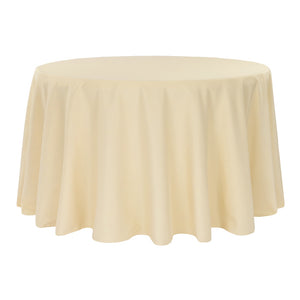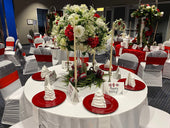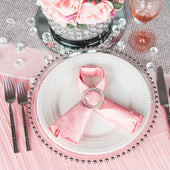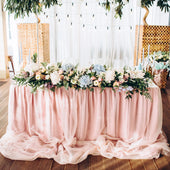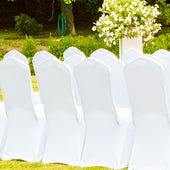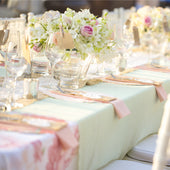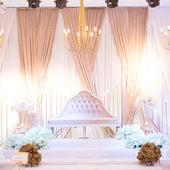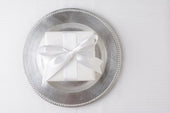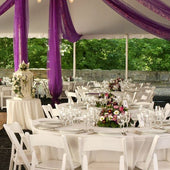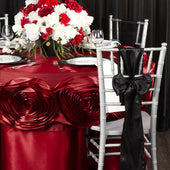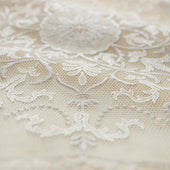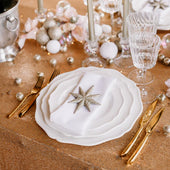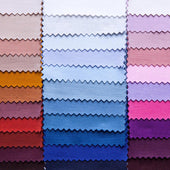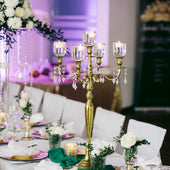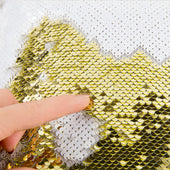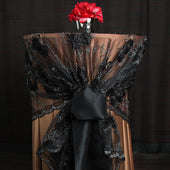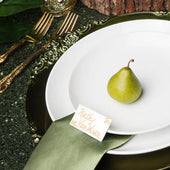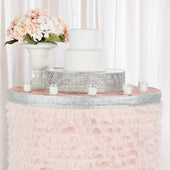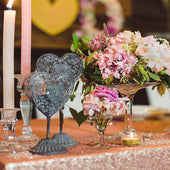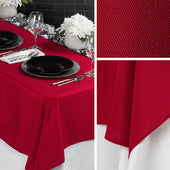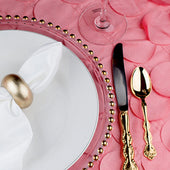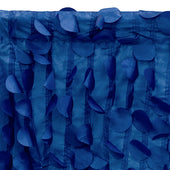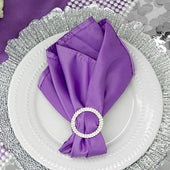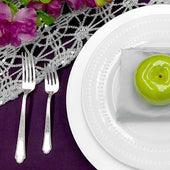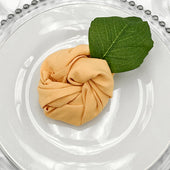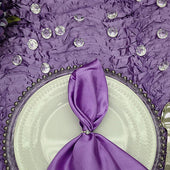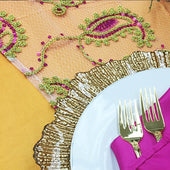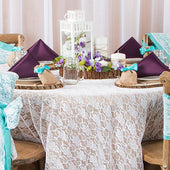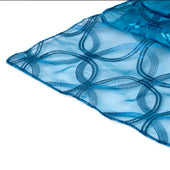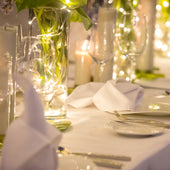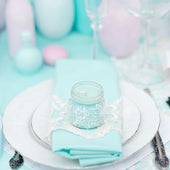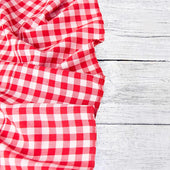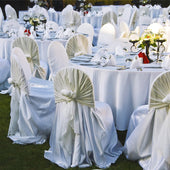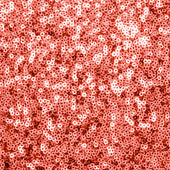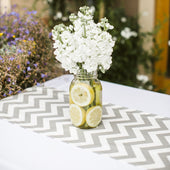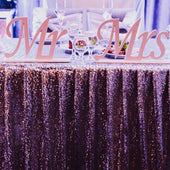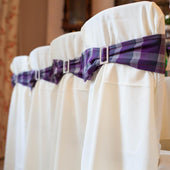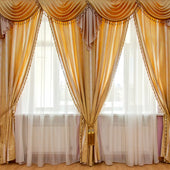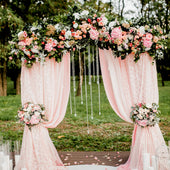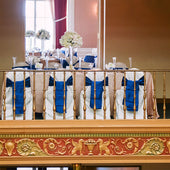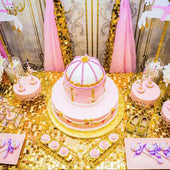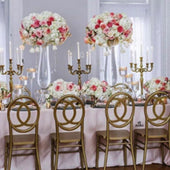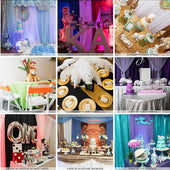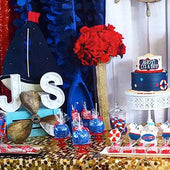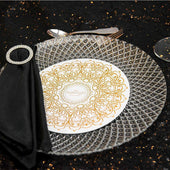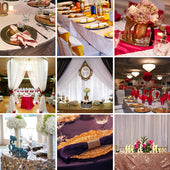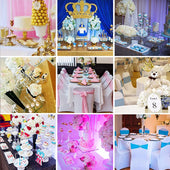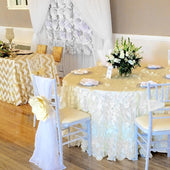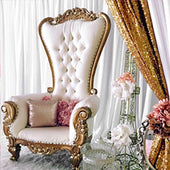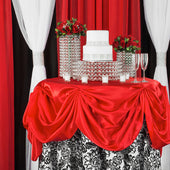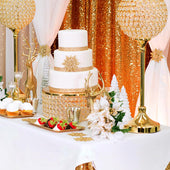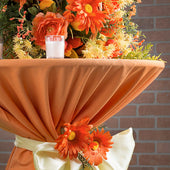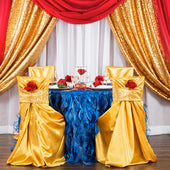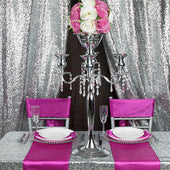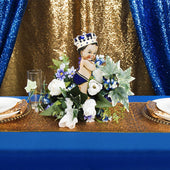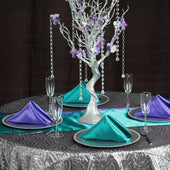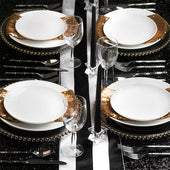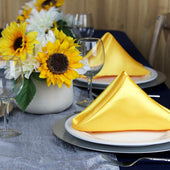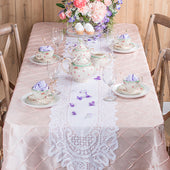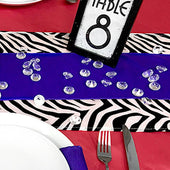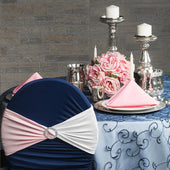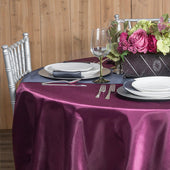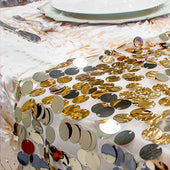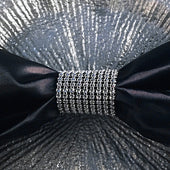Choosing the right tablecloth material can make all the difference in the look, feel, and functionality of your event or dining setup. Linen and cotton are two of the most popular options, each with its unique advantages. But which is better for your needs? Let’s explore the pros and cons of linen and cotton tablecloths to help you make the right choice.
The Pros and Cons of Linen Tablecloths
Linen tablecloths are known for their durability and timeless appeal. Here’s what you need to know about this popular fabric:
Pros:
- Natural texture and charm: Linen has a distinct textured look that enhances both casual and formal settings.
- Highly durable: Linen fibers are incredibly strong, making the material resistant to wear and tear over time.
- Temperature regulation: Linen stays cool in warm weather, making it an ideal choice for outdoor events or summer weddings.
- Eco-friendly material: Made from flax, linen is biodegradable and a sustainable choice for environmentally conscious hosts.
Cons:
- Prone to wrinkles: Linen wrinkles easily, which might not work for those looking for a smooth, polished finish.
- Higher cost: As a premium material, linen can be significantly more expensive than cotton or synthetic alternatives.
- Delicate maintenance: Washing and ironing linen can require extra care to avoid shrinking or damage.
When to Use Linen:
Linen tablecloths shine in weddings, outdoor receptions, and upscale dinners where their natural charm and high-quality look complement the atmosphere
The Pros and Cons of Cotton Tablecloths
Cotton is another natural fiber that offers versatility and affordability. Here’s a breakdown of what to expect from cotton tablecloths:
Pros:
- Soft and versatile: Cotton’s smooth texture works well for both casual gatherings and formal events.
- Cost-effective: Cotton tablecloths are generally less expensive than linen, making them accessible for smaller budgets.
- Easy to maintain: Machine washable and relatively simple to care for, cotton is a practical choice for frequent use.
- Wide variety: Cotton comes in an array of patterns, colors, and sizes, making it easy to match any theme or decor.
Cons:
- Less durable than linen: Cotton can wear down over time and is more likely to show signs of fraying.
- Shrinkage risk: If not washed properly, cotton tablecloths may shrink, affecting their usability for larger tables.
When to Use Cotton:
Cotton tablecloths are perfect for everyday use, smaller gatherings, or events where simplicity and comfort are key priorities.
Tip: Polyester tablecloths mimic the appearance of more expensive materials, offering style without the high cost or maintenance hassle.
Mixing and Matching with Overlays
If you can’t decide between linen and cotton, why not incorporate both? Using table overlays adds an extra layer of texture and dimension to your table settings. For example, a cotton tablecloth paired with a lace or organza overlay combines affordability with style, giving you the best of both worlds.
Tip: Overlays can also protect your base tablecloths, extending their lifespan while adding a decorative touch.
How to Decide Between Linen and Cotton
Ultimately, the decision between linen and cotton depends on your event type, budget, and personal preferences. Ask yourself the following:
- How formal is your event? For weddings and upscale occasions, linen is often the go-to choice.
- What’s your budget? Cotton and polyester are more budget-friendly without compromising too much on quality.
- Will you reuse your tablecloths? Cotton and polyester are easier to clean and store for future events, while linen requires extra care.
So, is linen or cotton better for tablecloths? It depends on what you value most. Linen is ideal for formal and high-end events, offering durability and a unique texture, while cotton is softer, versatile, and more budget-friendly for casual occasions.
Our Products
Table Overlay
Tablecloths
Table Runners








